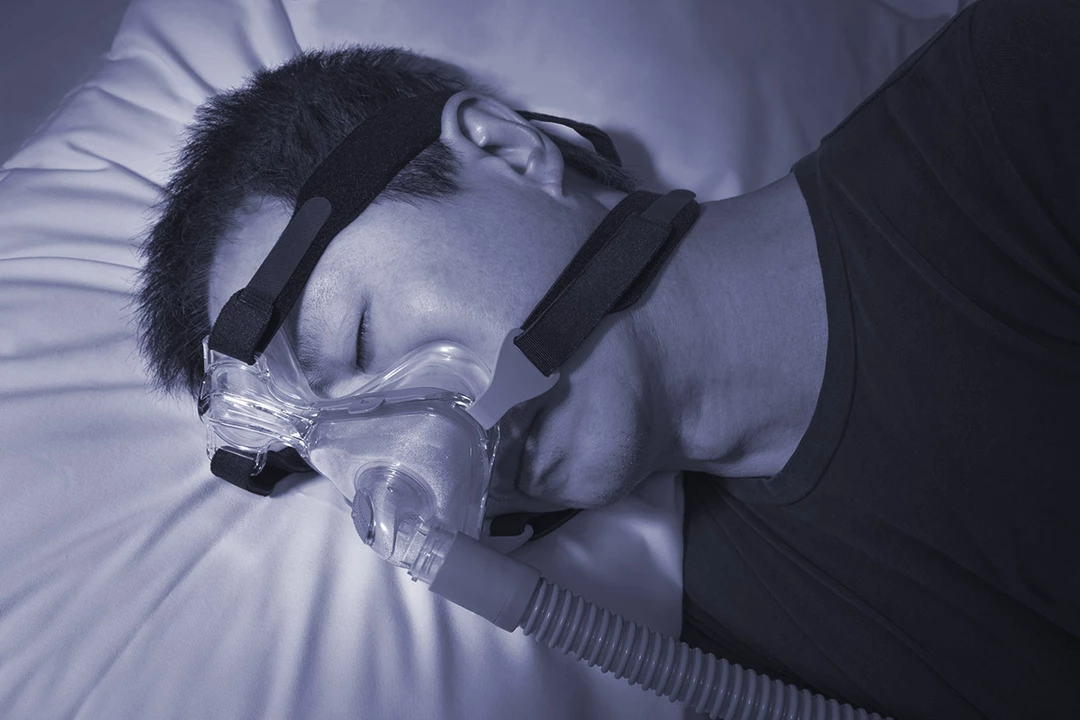Central sleep apnea: what to know
Central sleep apnea happens when your brain stops sending the right signals to the muscles that control breathing during sleep. Unlike obstructive sleep apnea, which is caused by a blocked airway, central sleep apnea is a problem with communication between brain and breathing drive. That difference matters because it changes how doctors diagnose and treat the condition.
What to watch for: loud pauses in breathing aren't always present. Common signs include waking up short of breath, daytime fatigue, trouble concentrating, morning headaches, and frequent nighttime awakenings. If you sleep with a partner, they might notice irregular breathing or long gaps between breaths.
Causes & risk factors
Causes and risk factors vary. Heart failure, stroke, brain injury, and certain neurological disorders can trigger central sleep apnea. Opioid medications can also cause it by blunting the brain’s breathing drive. Age and being male increase risk, and altitude can make symptoms worse.
How doctors diagnose it. A sleep study called polysomnography records breathing, oxygen levels, heart rate, and brain activity overnight. That test distinguishes central events from obstructive events. Sometimes home sleep testing helps, but in complex cases a full lab study is preferred.
Treatment depends on severity and cause. If an underlying condition such as heart failure or opioid use is at fault, treating that condition is the first step. For breathing support, positive airway pressure devices are common. CPAP can work if mixed events are present, but adaptive servo-ventilation (ASV) is often better for central sleep apnea because it adjusts support breath-by-breath to stabilize breathing. Supplemental oxygen helps in some cases.
Medications are not first-line but may help select patients. Drugs like acetazolamide or certain stimulants can increase breathing drive, though they have side effects and require specialist oversight. If opioids are the cause, reviewing pain management and considering alternatives is critical.
Lifestyle steps that help: sleep on your side rather than on your back, avoid alcohol and sedatives before bed, and follow a regular sleep schedule. Manage heart health and review medications with your doctor. For people who travel to high altitudes, gradual ascent and monitoring can prevent worsening.
When to see a doctor: if you or a bed partner notice pauses, gasping, extreme daytime sleepiness, or new heart symptoms. Untreated central sleep apnea raises the risk of accidents, worsened heart function, and poor quality of life.
Talk openly with your healthcare provider about symptoms and medication use. Central sleep apnea can be managed well in many cases once the cause is clear and the right treatment is chosen.
Tests to expect
Tests to expect: besides overnight polysomnography, your doctor may order daytime carbon dioxide monitoring, blood tests, and cardiac evaluation. If neurological disease is suspected, brain imaging like MRI can help. Bring a list of medications, recent hospital visits, and a sleep diary to the appointment.
Practical tips
Practical tips: keep devices maintained, replace masks as needed, and report new symptoms quickly. Sleep centers and pulmonologists have experience with central apnea. If treatment feels wrong, ask for a second opinion—this condition can be tricky and individualized care matters.

Amiloride for the Treatment of Central Sleep Apnea: A Promising Approach?
I recently came across a study discussing the potential use of Amiloride for the treatment of Central Sleep Apnea. This approach seems promising, as the medication appears to target the underlying neurological causes of the condition. Researchers are optimistic about its potential effectiveness, although further studies are needed to confirm these findings. If proven successful, Amiloride could provide much-needed relief for individuals suffering from Central Sleep Apnea. I'm looking forward to seeing how this research develops in the future.
